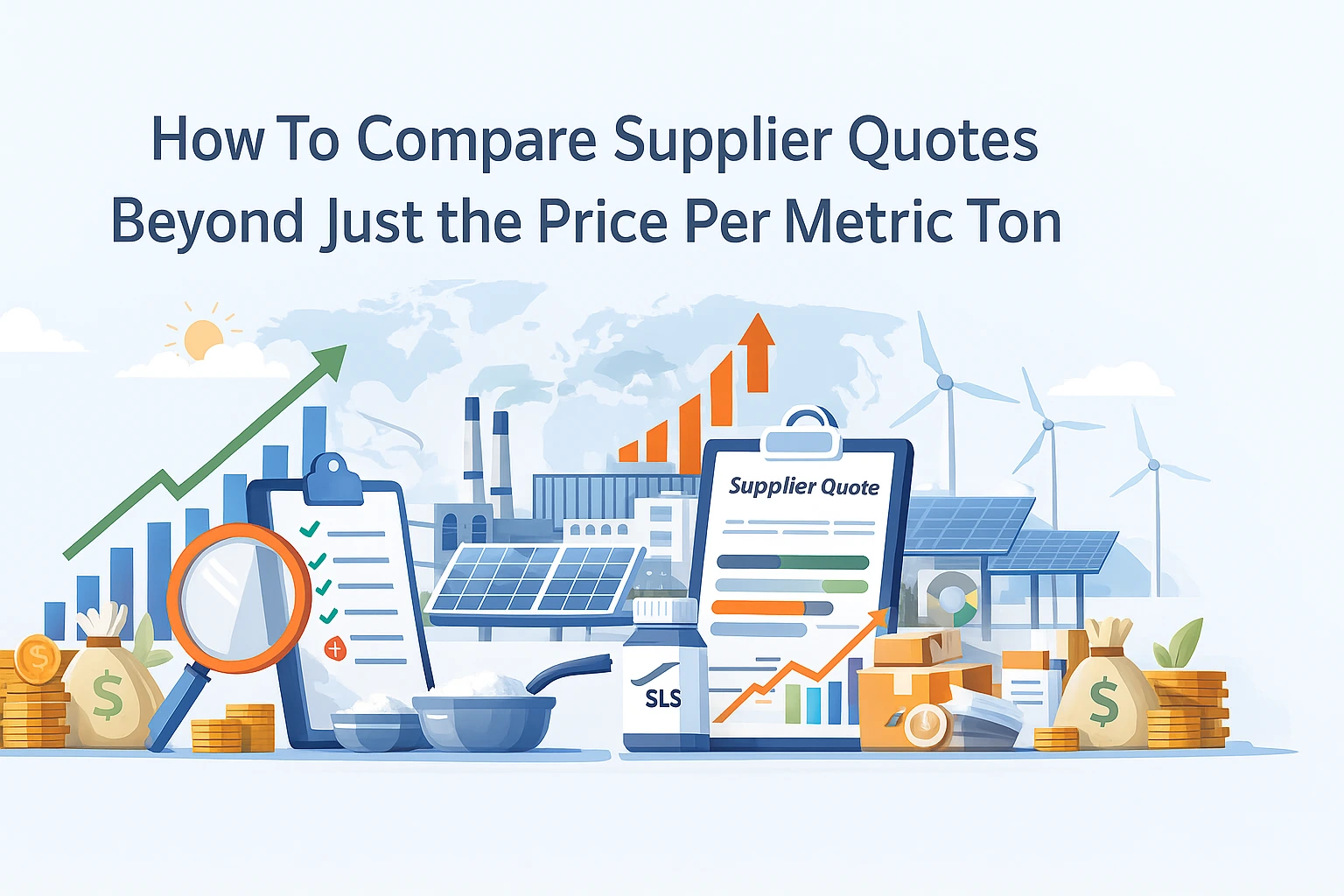Introduction: Why Price/Ton Is Not Enough
Caustic soda flakes are a key cost driver for pulp & paper, alumina, textiles, and water treatment, so buyers naturally focus on price per metric ton—but that metric alone can be misleading. Differences in NaOH content, impurity levels, and packaging can create large performance and cost gaps even when headline prices seem similar. Procurement best practice in the chemical industry increasingly emphasizes total cost of ownership (TCO) over unit price, reflecting downstream impacts on processing efficiency, maintenance, and waste.
Product Quality, Purity, and Specification Fit
The first comparison point beyond price should be technical specification: NaOH content (often 98–99% for flakes), limits on carbonate, chlorides, iron, and heavy metals, and moisture requirements. Higher-purity flakes may have a higher price/ton but can reduce dosing requirements, sludge formation, and equipment fouling, lowering operational costs over time. Buyers should insist on a recent Certificate of Analysis (COA) for each lot, verifying purity and impurities against internal process needs or standards such as ASTM and ISO for industrial NaOH.
Logistics, Packaging, and Handling Costs
Freight terms (FOB, CIF, DAP), lead times, and warehouse proximity strongly affect real delivered cost and risk exposure. Robust packaging—such as high‑density polyethylene-lined bags or bulk bags with moisture barriers—helps prevent caking and contamination, reducing product losses and handling issues. Buyers should account for inland transport, port fees, insurance, offloading equipment, and any special storage requirements (e.g., dry ventilated warehousing) when comparing quotes that appear similar on a per-ton basis.
Reliability, Risk, and Total Cost of Ownership
Supplier reliability—on-time delivery, historical performance, and financial stability—significantly influences TCO, because production downtime costs far exceed small differences in price per ton. Global chemical pricing analyses show that volatility in basic inorganic markets (including caustic soda) can be high, so long-term contracts, multiple sourcing, and benchmark data from price-reporting agencies (PRAs) like ICIS or ChemAnalyst help buyers manage risk. A TCO perspective factors in product performance, maintenance impacts, environmental compliance, and potential safety incidents tied to poor-quality or irregular supply.
Practical Steps for Comparing Supplier Quotes
-
Normalize quotes based on active NaOH content, delivered terms, and minimum order quantities before comparing prices.
-
Score suppliers across quality (purity, COA, certificates), logistics (lead time, incoterms), and reliability (on-time record, references) in a weighted matrix.
-
Use external market benchmarks and historical price data to validate that quoted prices are fair relative to global caustic soda trends.
-
Consider piloting product from new suppliers in a controlled trial to quantify performance and handling differences before full-scale switching.

Leave a Comment